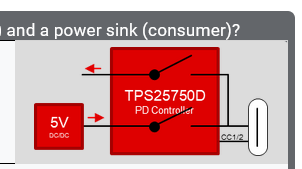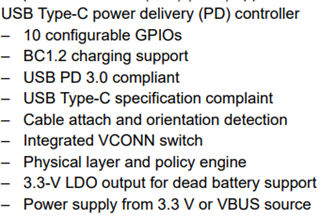Other Parts Discussed in Thread: USB-PD-CHG-EVM-01, , USB2ANY, BQ25792
Hi TI Support Teams,
I am evaluating the TPS25750 PD controller for our battery charger design. I would consider TI's USB-PD-CHG-EVM-01 is the good candidate to start the evaluation. My evaluation steps will be:
1. To use the USB-PD-CHG-EVM-01 as a USB PD power sink to charge our product battery.
2. To use the TPS25750 Application programming Tool to configure the TPS25750 and generate the binary file to program the EEPROM.
3. To interface the TPS25750 slave I2C port to a MCU.
According to the USB-PD-CHG-EVM-01 web page, I have purchased both USB-PD-CHG-EVM-01 and USB2ANY HW.. I have the following questions I would like to confirm with TI teams:
a) Is the TPS25750 application programming tool compatible with the USB-PD-CHG-EVM-01 and USB2ANY HW since I would like to use the TPS25750 application programming tool to change the TPS25750 configuration on the USB-PD-CHG-EVM-01 with different PD voltage or current? If not, what is the HW setup which allow me to configure (not program) the TPS25750 and generate a configuration binary file for EEPROM?
b) What is the USB2ANY for if the answer to the a) question is negative since connector J3 on the USB-PD-CHG-EVM-01 is marked for USB2ANY?
Thank you,
HLi



